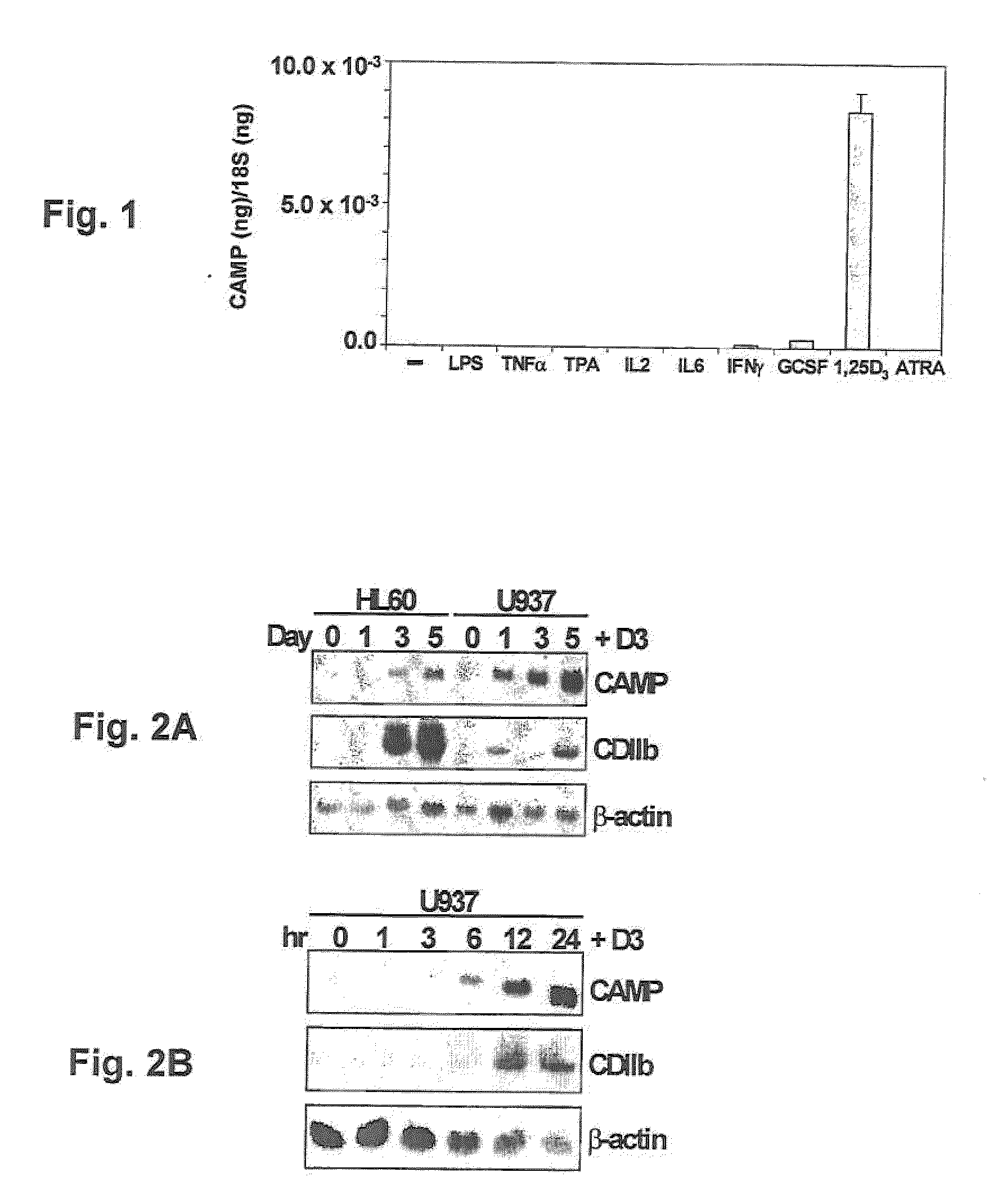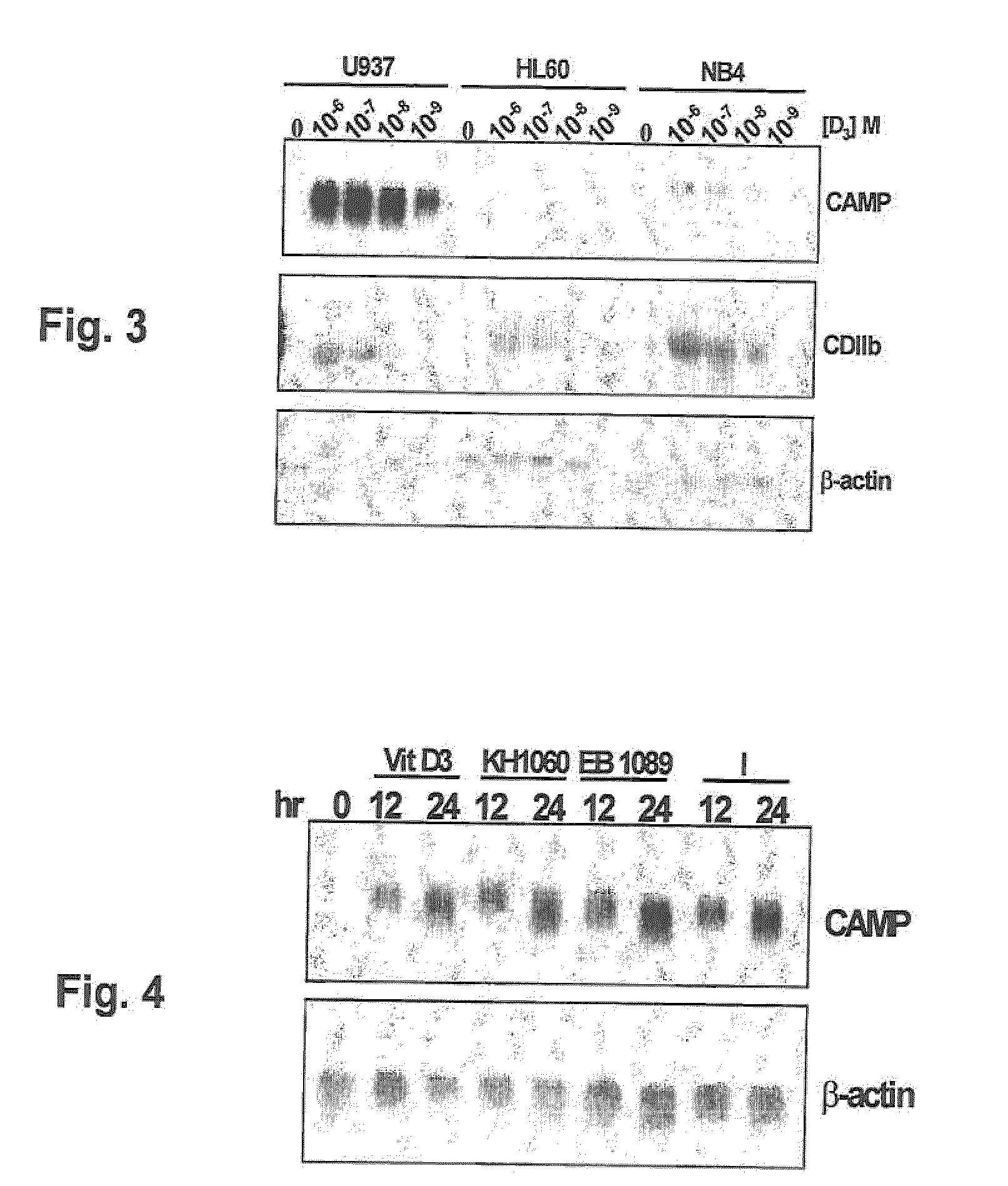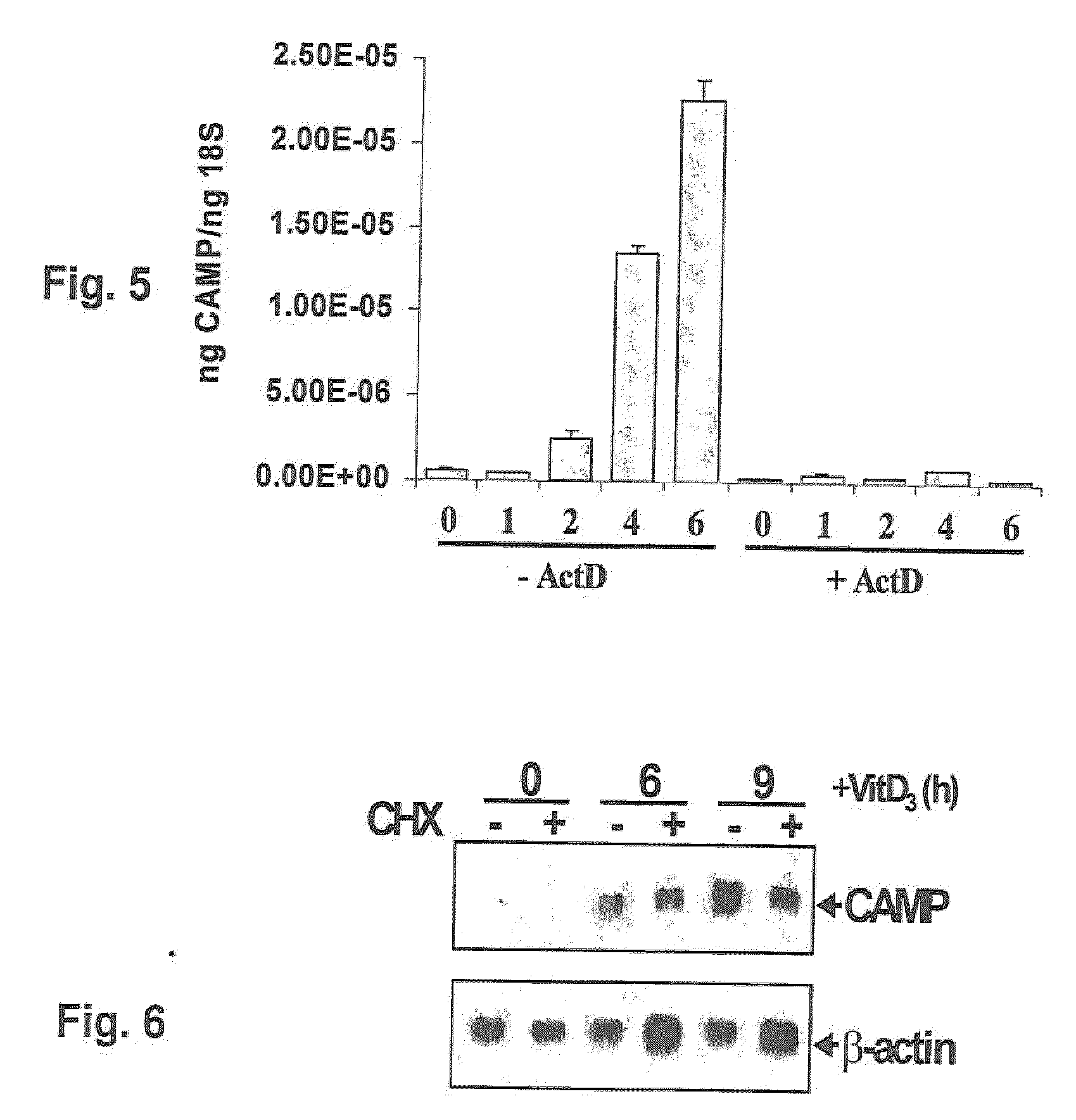Induction of innate immunity by vitamin d3 and its analogs
a technology of vitamin d3 and innate immunity, applied in the field of innate immunity, can solve the problems of reducing the quality of life after discharge from the hospital, affecting the development of immune-compromised people, and affecting the development of immune-boosting drugs
- Summary
- Abstract
- Description
- Claims
- Application Information
AI Technical Summary
Benefits of technology
Problems solved by technology
Method used
Image
Examples
example 1
Tissue Culture and Reporter Assays
[0067]The human myeloid leukemia cell lines U937, NB4, HL60 and ML1 were cultured in RPMI1640 (obtained from Invitrogen Corp.; Carlsbad, Calif.) containing 10% fetal calf serum (FCS) (obtained from Omega Scientific, Inc.; Tarzana, Calif.). The human bone marrow cells isolated either from two normal or one acute myeloid leukemia patient were cultured in RPMI1640 containing 10% FCS for short-term experiments. Bone marrow (BM)-derived macrophages (MΦ) were obtained by culturing normal human bone marrow (NHBM) cells in RPMI1640 containing 10% FCS, 200 ng / ml GM-CSF and 5% WeHi-3B conditioned medium (source of IL-3) for 14 days. The bone marrow samples were obtained from patients after informed consent was given. The immortalized keratinocyte cell line, HaCat (a kind gift from Dr. Norbert Fusenig, Heidelberg, Germany), and the colon cancer cell line, HT29, were cultured in DMEM containing 10% FCS. All media were supplemented with antibiotics (100 units pe...
example 2
Construction of Recombinant Plasmids
[0072]Primers (SEQ ID Nos. 2 and 3) (Table 1) were used to amplify the human CAMP promoter (nucleotides −693 to +14) from human genomic DNA (Larrick, J. W. et al., “Structural, functional analysis and localization of the human CAP18 gene,”FEBS Lett, Vol. 398, pp. 74-80 (1996)).
TABLE 1SEQ ID NO.: 2SEQ ID NO.: 35′-CCGACGCGTCATACTG5′-CCGCTCGAGGGAGTCTCACTCTGTTACC-3′TCCCCATGTCTGCCTC-3′
[0073]This fragment was subcloned into the firefly luciferase reporter plasmid pXP2 (Nordeen, S. K., “Luciferase reporter gene vectors for analysis of promoters and enhancers,”Biotechniques, Vol. 6, pp. 454-458 (1998)) and called pXP2-CAMP-Luc. Subsequently deletion mutants pXP2-CAMP(ΔSmaI)-Luc and pXP2-CAMP(ΔHindIII)-Luc were generated by restriction enzyme digestion, fill-in and religation of the purified linear plasmid. Constructs were verified by nucleotide sequencing.
example 3
Analysis of RNA and Protein Expression
[0074]Total RNA was prepared using Trizol Reagent (obtained from Invitrogen), electrophoresed through a formaldehyde-containing, 1% agarose gel and transferred to a positively charged nylon membrane (Hybond N+) for Northern analysis (obtained from Amersham Pharmacia Biotech; Piscataway, N.J.). The blots were sequentially probed with 32P-labeled DNA probes (Strip-EZ™; obtained from Ambion, Inc.; Austin, Tex.) specific for the CAMP, CD11b and β-actin mRNAs.
[0075]For quantitative real-time PCR (QRT-PCR), total RNA was prepared, treated with DnaseI (obtained from Invitrogen) and cDNAs were synthesized by reverse transcription using Superscript II reverse transcriptase as described by the manufacturer (obtained from Invitrogen). The cDNAs were then analyzed by QRT-PCR using a fluorescent probe (obtained from Applied Biosystems; Foster City, Calif.) against either CAMP (5′-6fam-[SEQ ID NO.: 4]-tamra-3′) (Table 2) or 18S (Tsukasaki, K. et al., “Identif...
PUM
 Login to View More
Login to View More Abstract
Description
Claims
Application Information
 Login to View More
Login to View More - R&D
- Intellectual Property
- Life Sciences
- Materials
- Tech Scout
- Unparalleled Data Quality
- Higher Quality Content
- 60% Fewer Hallucinations
Browse by: Latest US Patents, China's latest patents, Technical Efficacy Thesaurus, Application Domain, Technology Topic, Popular Technical Reports.
© 2025 PatSnap. All rights reserved.Legal|Privacy policy|Modern Slavery Act Transparency Statement|Sitemap|About US| Contact US: help@patsnap.com



